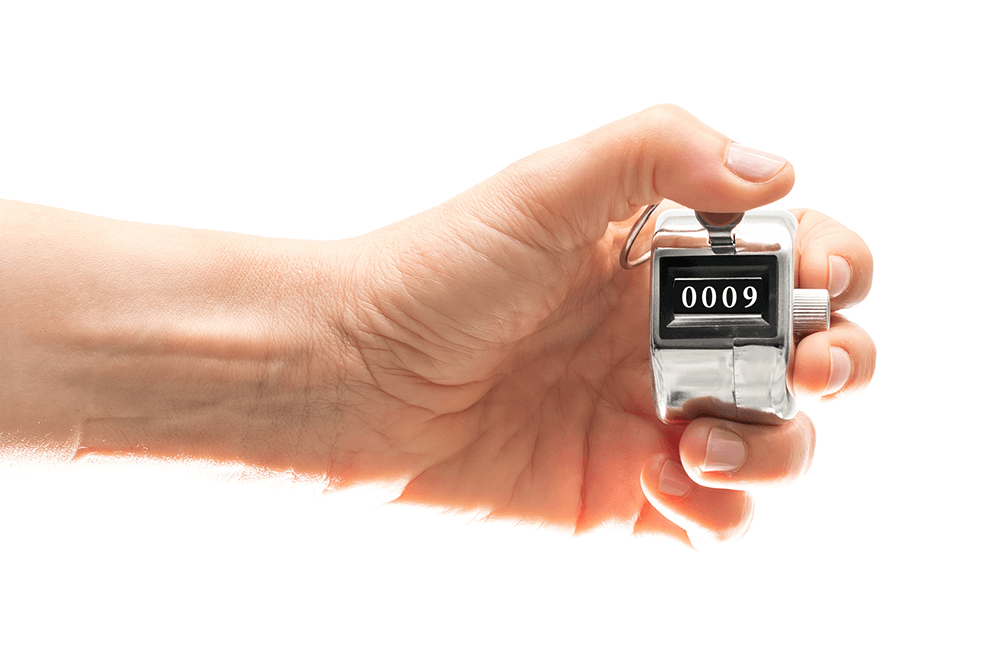
Your speech is going great. The words are flowing, your voice rising and falling in all the right places. Suddenly, like a faucet that’s run dry—nothing! Your mind goes blank. Oh no! What was I saying?
You hear yourself emitting the two most feared sounds in a Toastmaster’s world:
“Um . . . uh . . .”
Those dreaded filler sounds: meaningless utterances blurted out to plug an unwanted silence. Merely embarrassing for the speaker, they can irritate and turn off the audience if you use them excessively (which some Toastmasters define as “one more than never”).
That makes the Ah-Counter one of the most valuable roles in any Toastmasters meeting. Clubs have some intriguing ways of taking the role beyond scorekeeper, using it as an opportunity to improve both speaking and listening skills. That’s what the role’s purpose has always been, after all.
The Ah-Counter Role
“The purpose of the Ah-Counter is to note any overused words or filler sounds used as a crutch by anyone who speaks during the meeting,” states the official Toastmasters description. The assigned functionary doesn’t just track filler sounds like ah and um but also listens for empty words like so and well and excessive use of and and but.
That’s a crucial distinction, says Sherry Washburn of Dayton Road Toastmasters in Ames, Iowa. “It’s important to remember that some of those fillers, such as and, but, and so, can be used properly without being filler words,” she says. “Be sure you count them only when they are being used as fillers.” Instead of automatically marking your notes when you hear what you think is a filler word, listen for the context and decide whether it really is out of place.
How do you tell if a filler really is just a filler? Ask yourself if it adds anything of value or if the sentence would be diminished if it were removed.
For example, if you can cut out basically and not miss it, mark it as filler.
Making the Role Count
It’s important to deliver the Ah-Counter report in a positive, supportive way—just like any other evaluation. Maungakiekie Club in Auckland, New Zealand, combines the Ah-Counter and Grammarian roles into one, says member Mike Diggins, DTM. “I encourage [the functionary] to say they will stop counting after so many uses of a word and to look for those who used fillers much less than they did previously.”
It’s important to deliver the Ah-Counter report in a positive, supportive way—just like any other evaluation.
The Court of Blarney Toastmasters in Newmarket, Ontario, Canada, counts the total number of filler words by member and “those who use none are complimented,” says club member Jim Chapman.
Saved by the Bell—or Shamed?
Some clubs sound a bell or a clicker when a speaker utters a filler word; other clubs find bells and clickers distracting and intimidating. Clubs that used them pre-pandemic say they are effective because they provide immediate feedback. “It sounds harsh, but it isn’t,” says Terry Spencer, a member of Davie Toastmasters in Davie, Florida. “Telling someone they said an um 45 minutes ago is worthless.” But there’s a method to making it work right, he cautions. “We don’t ding visitors or new members until they have given their Ice Breaker. We also tell the counter to be aggressive but if the speaker is new, to call off the dings if they are too frequent—particularly if they are leaving the person flustered.”
The move to online meetings has made some clubs stop using the bell or clicker, as the sound would force the Ah-Counter to take over the featured speaker spot on everyone’s screen. Instead, clubs are sending private chat messages to the speaker when they are finished or using visual cues during the speech such as holding up a sign or clicking on one of the reaction emojis at the bottom of the Zoom screen.
Catching What Counts
No matter how you catch and report those filler words and sounds, the Ah-Counter can be intimidating to new or shy members. It’s important to remember why the role matters.
“If a meeting is running over and time is short, we have the Ah-Counter list each person’s highest-used crutch word instead of listing them all,” says Marianne Ferrara, DTM, a member of Mercer’s Best Toastmasters in Lawrenceville, New Jersey. “We tell members if they can concentrate on reducing or eliminating even that one word, it can make a big difference.”
Kate McClare, DTM , is a professional writer and editor who joined Toastmasters in 2011. She is a member of Miami Advanced Toastmasters Club in Kendall, Florida, and an Area Director for District 47, Southeast Florida and The Bahamas.
Related Articles

Meeting Roles
The Grammarian’s Gift

Meeting Roles
Are You Ready to Take On Toastmaster of the Day?

Meeting Roles
The Timer's Toolkit

Presentation Skills



 Previous
Previous
 Previous Article
Previous Article